

Our demonstrator for December was Robert H. Farris, Jr. He presented a demonstration in oil.
The meeting was held in the Guild Hall, First Congregational Church (middle side door), Sanborn Street, Reading, Wednesday December 8th, 2010 at 7:30 p.m.
We have some photographs of the event in case you could not make it there in person. You can click on any of the images on this page to view a larger version of it. Then, use the Back button on your browser to return to this page.
Robert presented a demonstration of his technique for oil painting, which involves four stages of work:

Here is Robert's setup. You can see some of his paintings
on the easel to the right. He works in a realistic style.
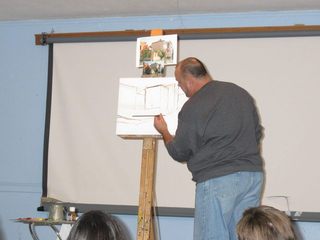
Robert draws with the brush. This avoids the mess caused by the graphite in the
pencil mixing with the paint. If he needs to erase, he uses a cloth with turps on it.
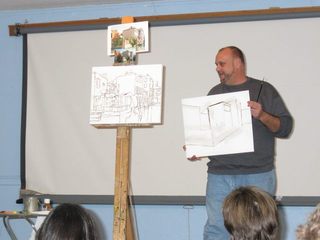
He draws what he calls the "envelope" of the spaces in the painting.
Then, he adds the details inside of the envelope. On the easel he
showed us what the finished drawing is like compared to the envelope.
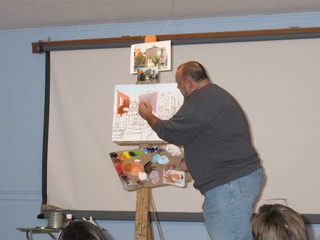
On the finished drawing he established the basic color masses. He uses
complementary colors to tone down the brilliance of the primary pigments.
This is the "underpainting" stage, where he establishes the basic shapes.
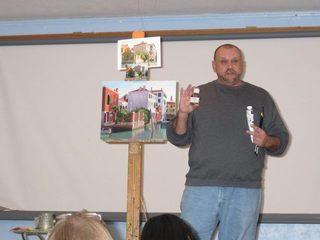
To add textures, he mixes the paint with Liquin®, which is a transparent
medium. Since that makes the paint transparent, the underpainting shows through.
The texture is glazed onto the underpainting. He also uses scumbling for texture.
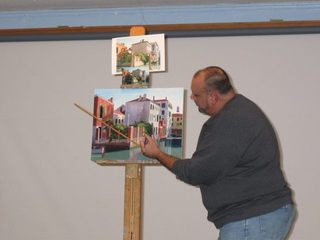
The "big once-over and detailing" is done with a fine brush. The use of medium
allows him to paint over wet paint without mixing the colors on the canvas.
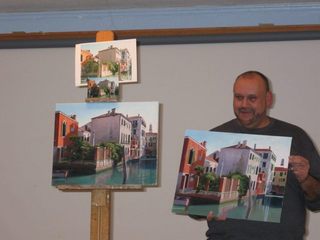
After the once-over, he goes over the painting again for a
final finish and cleanup. The final painting is on the easel.
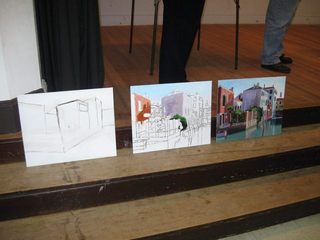
Here are the first three stages of the painting.
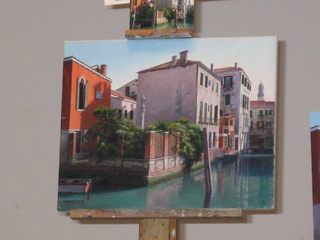
And here is the fourth, and final, stage.
Robert H. Farris, Jr., of Lynn is a regional oil painter working in the manner of traditional realism. His glazing technique and comprehensive use of complementary/analogous color theory have brought a crisp, fresh look to his landscapes, still lifes, and portraits. His work has attracted private collectors from across the country, including judges' portraits for the East Boston and Peabody Courthouses and the American Embassy in Lima, Peru. His work has been published in Artist's Magazine, North Light Magazine, and Panorama Magazine. He wrote an article on his technique for Arts New England Magazine; has exhibited at the Portland, Maine, Art Museum and the Lynn Museum; contributed to WGBH's collection; and is listed in Who's Who in the East and in Who's Who in America 2000.
This demonstration will take the audience through the processes of creating an oil painting based on both photographic information gathered and personal remembrances while on holiday. Once the desired image has been chosen, the color palette selection and extensive use of "colorist" color theory will be explained and demonstrated. How to edit parts of the image and use old techniques such as glazing and scumbling will also be discussed along with determining selective detailing. The demonstration will be presented in a classroom format where the audience is free to ask questions at any time and is strongly encouraged to take notes on techniques and color theory. Robert says, "I love to interact with the audience, sharing stories and knowledge, and just having fun!"
Robert established Wood End Studio in Lynn in 1995, where he teaches oil painting to an award-winning group known as Wood End Studio Associates.